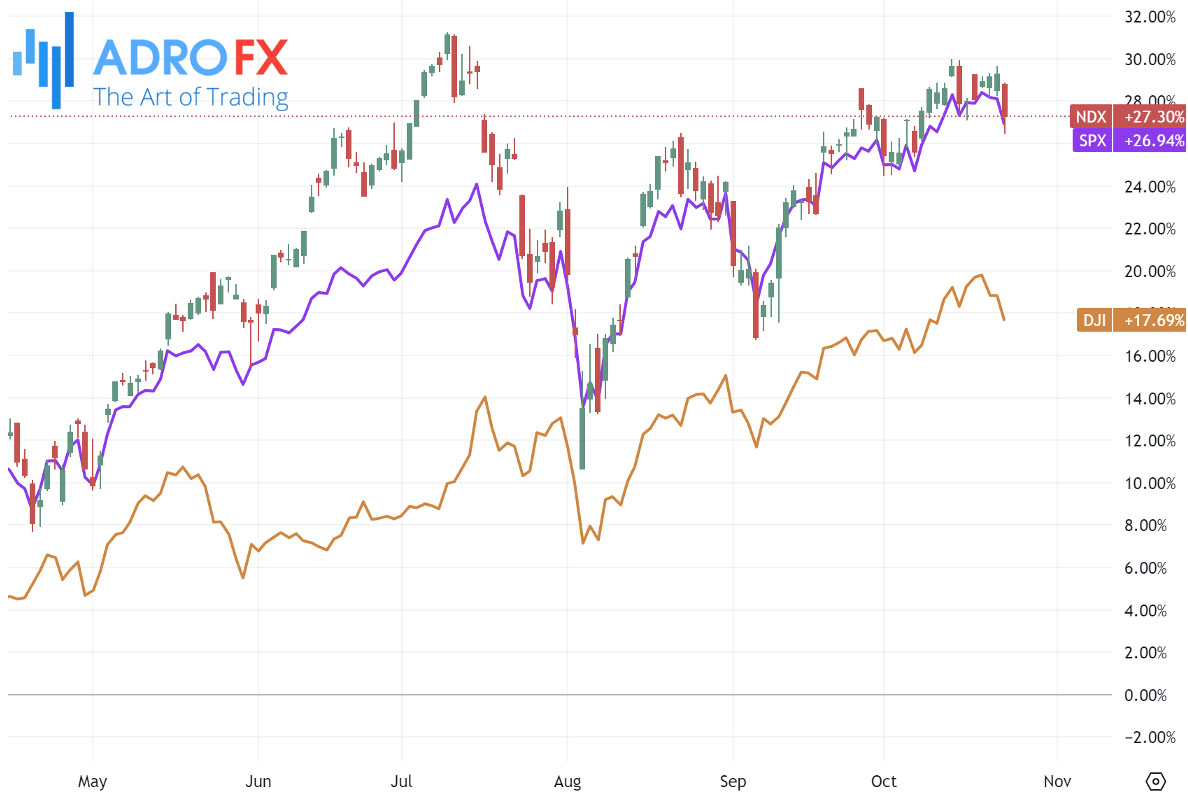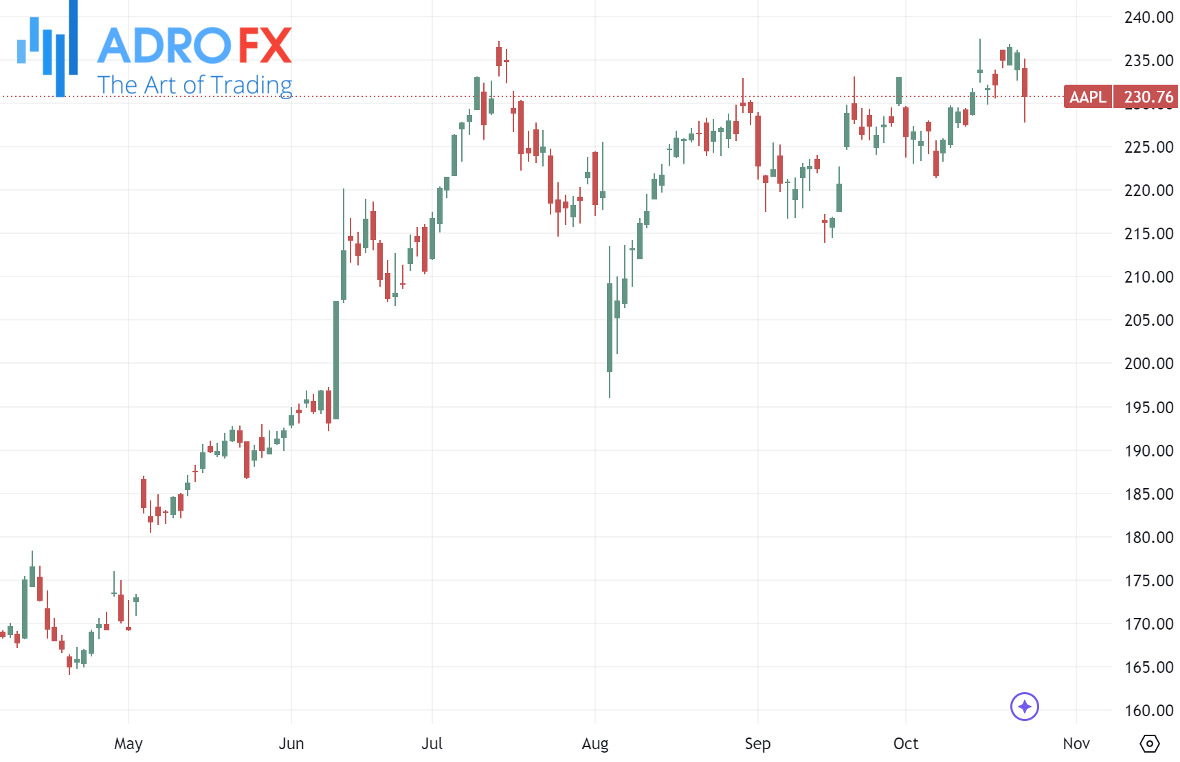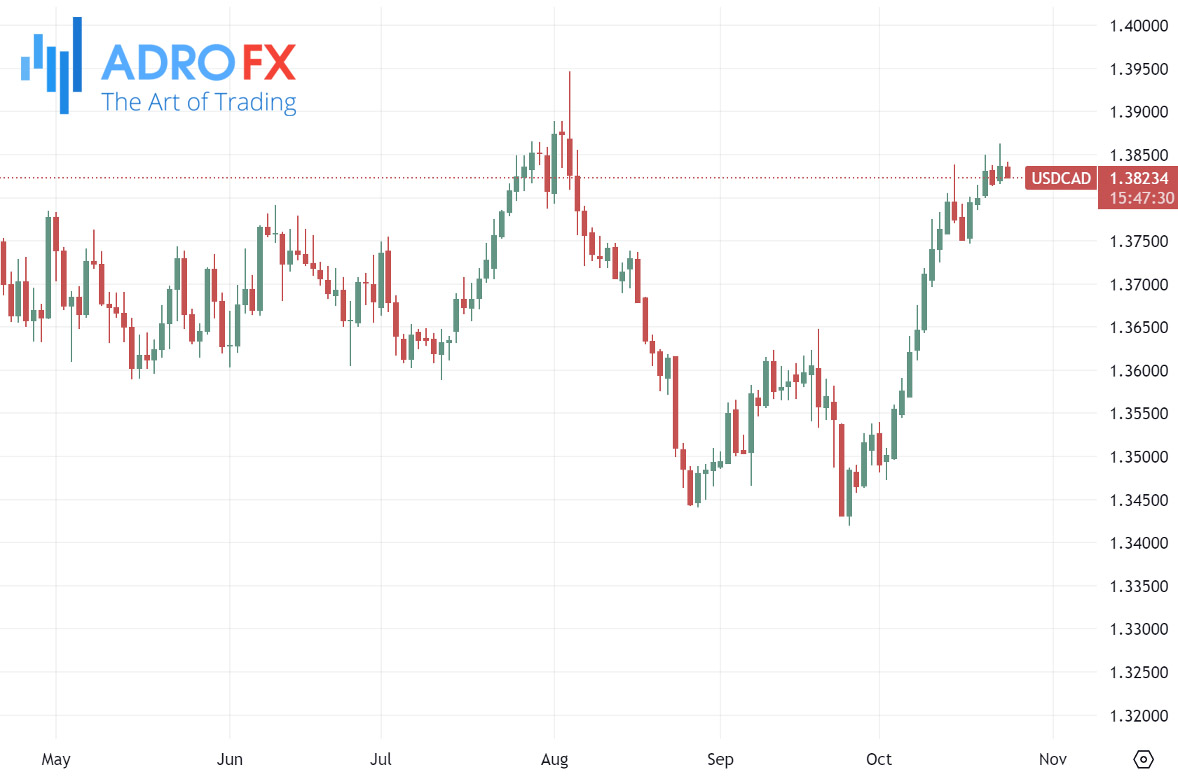Tech Sector Tumbles and Rising Yields Weigh on US Stocks as Apple, Boeing Lead Losses | Daily Market Analysis

Key events:
- USA - Initial Jobless Claims
- USA - S&P Global US Manufacturing PMI (Oct)
- USA - S&P Global Services PMI (Oct)
- USA - New Home Sales (Sep)
US stocks took a sharp downturn on Wednesday, weighed down by tech sector losses as Treasury yields continued to rise. This slump is largely attributed to growing concerns about the Federal Reserve’s future rate-cutting cycle, which seems less likely to be aggressive. The Dow Jones Industrial Average dropped by 409 points, or 1%, while the S&P 500 index slipped 0.9%, and the NASDAQ Composite fell by a more substantial 1.6%.

Among the most notable declines was Apple Inc., which saw its stock fall by over 2%. This drop followed a gloomy forecast from well-regarded market analyst Ming-Chi Kuo of TF International, who predicted reduced demand for the upcoming iPhone 16. According to Kuo, Apple has reduced orders for the fourth quarter of 2024 by around 10 million units, extending through the first half of 2025. The news sparked concern, as iPhone sales are a critical revenue driver for the tech giant.

Another notable stock in the spotlight was Boeing Co., which fell 3% after releasing quarterly results that missed market estimates. This marked Boeing's largest quarterly loss since 2020, driven by supply chain disruptions and ongoing production issues. In contrast, AT&T saw its stock rise by more than 4%, as the telecom giant reported better-than-expected wireless subscriber growth in the third quarter. AT&T’s performance was bolstered by its high-tier unlimited plans, despite reporting a $4.4 billion goodwill impairment charge related to its business-wireline unit. Finally, Coca-Cola also posted a 2% decline, as sluggish demand overshadowed the company’s ability to beat earnings expectations due to price hikes.
In the currency market, the Australian Dollar edged higher against the US Dollar after a strong domestic Purchasing Managers Index (PMI) release. The weakening of the USD, driven by a modest dip in US Treasury yields, further helped push the AUD/USD pair higher. At the time of writing, yields on 2-year and 10-year US Treasury bonds were sitting at 4.07% and 4.23%, respectively. The Reserve Bank of Australia remains hawkish, supported by robust employment data, which adds upward pressure on the AUD. Earlier this week, RBA Deputy Governor Andrew Hauser highlighted that the country’s labor participation rate remains high, signaling economic resilience.

Meanwhile, the Japanese Yen managed to regain some strength against the USD, recovering from steep losses earlier in the week. Verbal intervention from Japanese officials, alongside a modest pullback in US Treasury yields, spurred some USD profit-taking, benefiting the JPY. However, any significant appreciation for the Yen is unlikely given the uncertainty surrounding the Bank of Japan's interest rate policy and upcoming elections, which add to the country's economic uncertainties.

The USD/CAD pair also retreated during Thursday’s Asian session, moving away from the 1.3860-1.3865 zone that it had reached the previous day. The spot price hovered around 1.3825, down nearly 0.10% for the day, as the USD weakened slightly. The Canadian Dollar, however, did not gain significantly due to the Bank of Canada’s recent decision to lower its key interest rate by 50 basis points. This marked the BoC’s first rate cut since the onset of the COVID-19 pandemic, and the market is now anticipating the possibility of further cuts, which could limit the CAD’s upside potential. Additionally, the rise in crude oil prices provided some support to the commodity-linked Loonie, but any substantial gains remain capped for now.

The NZD/USD pair also gained ground, as the USD faced downward pressure following the Federal Reserve’s Beige Book release on Wednesday. The report showed that economic activity was "little changed in nearly all Districts," contrasting with the previous report, which indicated some growth. The NZD/USD pair traded around 0.6010 during the Asian session on Thursday. While the US Dollar Index, which tracks the Greenback against a basket of six major currencies, recently hit a high of 104.57, it eased off slightly as traders took profits following four weeks of strong gains.

Looking ahead, traders will be watching for the release of the S&P Global PMI to gauge US private-business activity in the manufacturing and services sectors. Meanwhile, the New Zealand Dollar’s upside is tempered by expectations of another rate cut from the Reserve Bank of New Zealand in November, amid softening inflation and sluggish economic growth.









